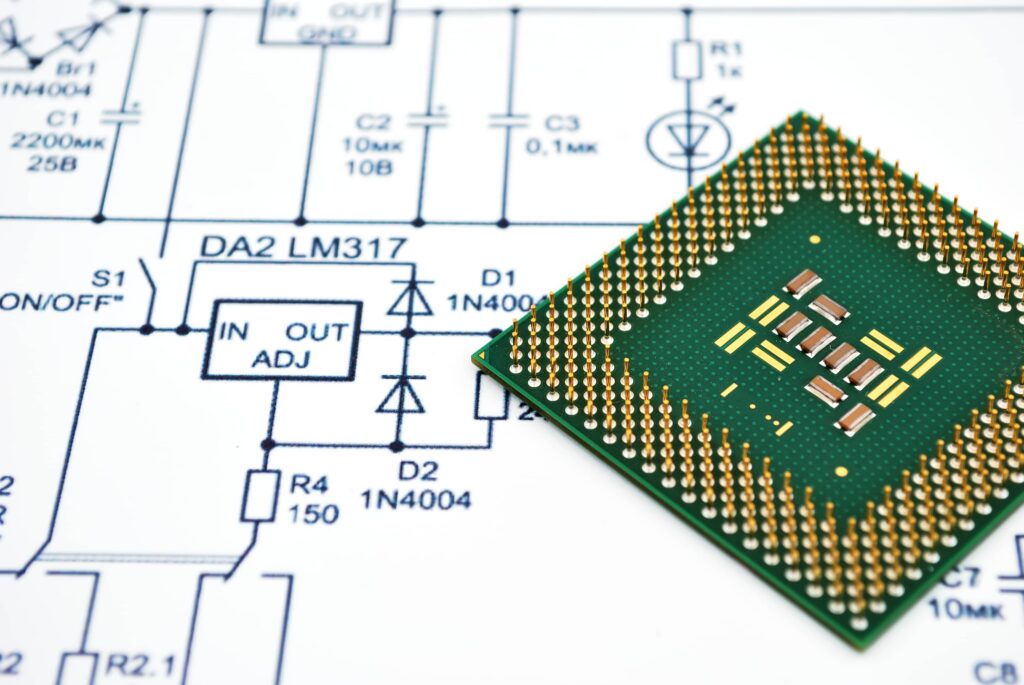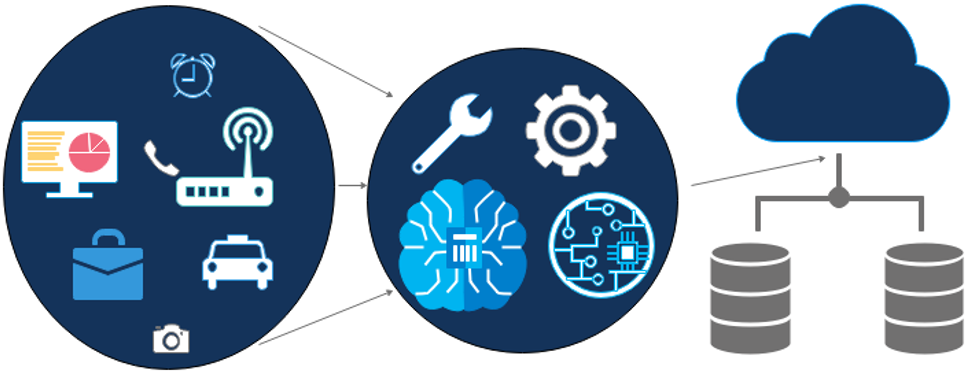System-on-Module (SOM)
is a design strategy that involves using modularized hardware components to create a system. The SOM approach allows for faster and simpler design cycles by providing pre-tested and pre-integrated hardware modules that can be easily integrated into a system.
Advantages of SOM Design Strategy:
1. Faster Time-to-Market: SOMs can greatly reduce the time required for the development and integration of hardware components.
This is because the SOMs are pre-tested and pre-integrated, which eliminates the need for a lengthy design and integration process.
2. Simplified Hardware Design: SOMs allow for a simpler hardware design process, as the hardware components are already integrated into a single module.
This eliminates the need to design and integrate multiple hardware components separately, which can be time-consuming and error-prone.
3. Enhanced Performance: SOMs often use advanced and high-performance hardware components, which can improve the overall performance of the system.
This can be especially useful in applications that require high-speed data processing or real-time processing capabilities.
4. Reduced Development Costs: Using SOMs can help reduce development costs by eliminating the need for a lengthy hardware design and integration process.
In addition, SOMs can often be sourced at a lower cost compared to designing and sourcing hardware components separately.
SOM design strategy offers several benefits for faster and simpler design cycles. By using pre-tested and pre-integrated hardware modules, SOMs can reduce the time required for the development and integration of hardware components, simplify the hardware design process, improve system performance, and reduce development costs.
SOMs offer a cost-effective and efficient solution for the development of hardware systems.

One of the main benefits of using a SOM design strategy is that it allows design teams to take advantage of pre-tested and pre-integrated hardware modules, which can greatly reduce the time and effort required to develop and integrate hardware components.
This is especially important in the fast-paced and competitive world of product development, where time-to-market is a key factor in success.
In addition, SOMs often include advanced and high-performance hardware components, which can improve the overall performance of a product.This is particularly useful in applications that require high-speed data processing or real-time processing capabilities.
SOMs can help improve the security of a product by using hardware components that are designed with security in mind.This is especially important in markets such as healthcare, finance, industrial, and enterprise computing, where data security is a top concern.
SOMs are flexible and scalable, which means that they can be easily modified or customized to meet the specific needs of a product.This can be useful in cases where a product requires additional hardware capabilities or needs to be adapted to meet changing requirements.
The SOM design strategy offers a range of benefits that can help design teams speed up product development, improve performance, and enhance security.
By using SOMs, design teams can create products that are faster, simpler, and more reliable, which can help them outpace their competitors and succeed in today’s fast-paced market.
The SOM design strategy is a powerful tool for the development of hardware systems and has the potential to revolutionize the way hardware is designed and developed.
1. Scalability: SOMs are designed to be scalable, which means that they can be easily modified or customized to meet the specific needs of a system. This can be useful in cases where a system requires additional hardware capabilities or needs to be adapted to meet changing requirements.
2. Reusability: SOMs can be easily reused in different systems, which can help reduce development costs and speed up the design process. This is because the SOMs are modularized and can be easily integrated into different systems without the need for significant redesign.
3. Ease of Maintenance: SOMs are designed to be easy to maintain, as the modularized hardware components can be easily replaced or upgraded if needed. This can help reduce downtime and improve the overall reliability of a system.
4. Improved Reliability: SOMs are often designed with high-quality and reliable hardware components, which can improve the overall reliability of a system. This is especially important in applications where downtime or system failure is not an option.
5. Compatibility: SOMs are designed to be compatible with a range of operating systems and software platforms, which makes them flexible and easy to integrate into a variety of systems.
What is an SOC?
A System on Chip (SoC) is an integrated circuit that integrates all the components of a computer or electronic system into a single chip. It typically includes a microprocessor or microcontroller, memory, and peripheral interfaces, as well as other components that are necessary for the specific application of the SoC.
The microprocessor or microcontroller is the central processing unit (CPU) of the SoC and is responsible for executing instructions and controlling the other components of the SoC. Memory, such as RAM and flash memory, is used to store data and program code. Peripheral interfaces, such as I/O interfaces, allow the SoC to communicate with other devices and systems.
In addition to these basic components, SoCs may also include additional specialized components such as digital signal processors (DSPs), graphics processors, and specialized I/O interfaces.
For example, SoCs used in mobile devices often include a graphics processing unit (GPU) to handle the display and 3D graphics, as well as a digital signal processor (DSP) to handle audio and video processing.
SoCs are widely used in a variety of electronic devices and applications, including mobile phones, tablets, and other mobile devices, as well as embedded systems and IoT devices.
One of the main advantages of SoCs is that they can provide a high level of integration, which leads to smaller form factors, lower power consumption, and lower costs compared to systems that use separate components.
SoCs also allow for good flexibility in design as it is possible to integrate various components into one chip, also it allows for higher performance as all the components are integrated in a single chip, which means that data doesn’t have to be transferred between multiple chips, leading to lower power consumption and a reduction in latency.
SoCs can be manufactured using a variety of technologies, such as CMOS (complementary metal-oxide-semiconductor), BCD (bipolar-CMOS-DMOS), and BiCMOS (bipolar-CMOS).
Hence, SOM vs SOC which is better?
Whether a System-on-Module (SOM) or a System-on-Chip (SoC) is better depends on the specific requirements and constraints of your project. Both have their own advantages and disadvantages and the choice between the two will depend on the specific needs of your application.
SOMs are pre-fabricated modules that contain a microcontroller or microprocessor and other components such as memory and peripheral interfaces, which are required to build an embedded system.
SOMs are designed to be integrated into a larger system and provide a compact, easy-to-use solution for embedded systems design. They are often used in applications such as industrial automation, medical devices, and transportation.
On the other hand, SoCs are complete systems that integrate all the components of a computer or device into a single chip.
It typically includes a microprocessor, memory, and peripheral interfaces as well as additional components such as digital signal processors (DSPs), graphics processors, and specialized I/O interfaces. SoC are widely used in mobile phones, tablets, and other mobile devices, as well as in embedded systems and IoT devices.
Here are a few general points that might help you to decide:
- SoC is typically the better choice when you have a high-performance or low-power requirement application, because SoC can integrate all components into a single chip, it provides high-performance computing and lower power consumption.
- SOM is a better choice when you have a need for flexibility, scalability and modularity, because SOM are a pre-integrated module that can be easily replaced and upgraded as needed, which can greatly reduce the costs and time required for new product developments and maintenance.
- SOM also is a good choice when you are working on projects with tight schedules, since SOMs can greatly reduce the time required for the development and integration of hardware components.
- SOM also can be a cost-effective solution in comparison to a SoC, SOMs can often be sourced at a lower cost compared to designing and sourcing hardware components separately.
It is important to keep in mind that, both SOM and SoC have their own advantages and disadvantages, the choice between the two should depend on the specific needs of your application.
Looking for End to End Industrial Automation & IoT Solutions?



















